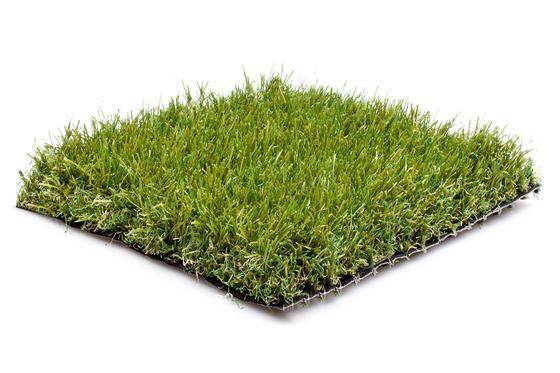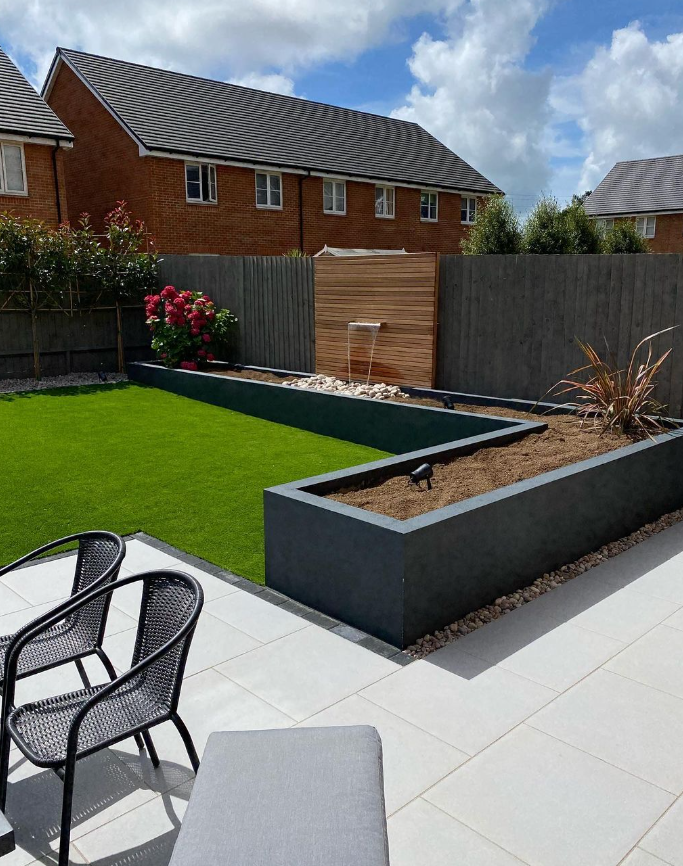
5 Ways How to Make a Shady Garden Feel Bright and Inviting
It’s easy to feel a bit stuck with a shaded garden. The grass won’t grow quite right, colours seem dull, and the whole space can feel more forgotten than welcoming. But here’s the thing: shady garden ideas don’t have to be boring. In fact, with a few clever touches, you can brighten up a shaded garden and make it feel surprisingly open and fresh.
Whether you're tired of patchy turf or just want something more low-effort, there are plenty of low-maintenance garden tips that work brilliantly in the shade. This guide will show you how to transform dark outdoor spaces with smart planting, reflective garden decor, soft lighting, and artificial grass for shade.
1. Choose Light-Reflecting Colours and Surfaces

A bit of smart surface choice can make all the difference in how your garden feels, especially in areas that don’t get much sun. Light bounces better off pale or textured materials, and that helps lift the mood of a shaded spot. It’s not about painting everything white, either—just choosing tones and surfaces that reflect rather than absorb light.
Think creamy paving slabs, soft-grey decking, or even pale gravel borders. White or soft-coloured fencing panels can also help bounce natural light into corners that normally stay gloomy. And if you’ve got planters or pots, go for light ceramics or even metallic finishes to double up on brightness.
Here are a few easy colour pairings that work in shaded spaces:
-
Pale grey slabs with sage green pots
-
White gravel with terracotta planters
-
Light oak decking with black or charcoal features for contrast
-
Soft stone walls with silvery-leafed plants
-
Cream tiles next to artificial grass for shade (extra pop of green, zero hassle)
That contrast between textures and tones helps to break up the heaviness, giving the space some life, without the need for full sunlight.
2. Plant Shade-Loving Bright Foliage and Blooms

If the sun won’t shine, let your plants do the glowing instead. Shade doesn’t mean a lack of colour—it just asks for the right plants for shade. And once you get it right, it’s actually quite relaxing not to worry about scorched leaves or fading flowers.
Look out for plants with bold foliage and blooms that don’t mind a bit of shade. Think of this less like planting and more like layering—just like you’d do with textures in a cosy living room. Bigger, leafier plants at the back; splashes of colour nearer the edges. It brings shape, contrast and a bit of movement to the space.
Some great low-light choices that do the work for you:
-
Hostas – large, dramatic leaves in soft greens and blues
-
Heucheras – colourful foliage in purples, coppers and lime
-
Hydrangeas – big, bright flowers that thrive in partial shade
-
Japanese forest grass – great for edging paths with a golden-green shine
-
Ferns – soft, airy texture for that lush, woodland feel
Together, these create a layered look that softens hard edges and helps transform dark outdoor spaces into something really quite charming.
3. Add Mirrors or Reflective Garden Decor

Sometimes the simplest trick is the cleverest. A well-placed mirror or bit of reflective garden decor can work absolute magic in shaded corners—bouncing light, opening up tight spots, and making the whole space feel bigger than it is.
It’s all about where and what you place. A mirror opposite greenery doubles the lushness. Just don’t put it where birds might mistake it for open sky—go for lower placements or partial reflections to keep it safe. Materials matter too: acrylic and stainless steel tend to be more garden-friendly than glass, with less risk and weather resistance built in.
Some quick tips to get it right:
-
Place mirrors at an angle to catch dappled light
-
Choose window-style or arched mirrors for a ‘garden within a garden’ feel
-
Try mirrored panels behind tall planters or climbing plants
-
Mix in reflective pots or ornaments for subtle shimmer
-
Avoid placing mirrors directly opposite seating areas (can be a bit much)
It’s a small shift, but it helps brighten up a shaded garden in a way that feels intentional—and a bit magical, to be honest.
4. Use Strategic Lighting for Evening Glow

Natural light might be limited in shady gardens, but that’s where clever lighting steps in. By nightfall, the right setup can completely shift the mood, from dull and shadowy to soft and inviting. Whether it’s for summer evenings or just adding warmth to a dark corner, the right lights do a lot of heavy lifting.
Start with uplighters near trees or larger plants to draw the eye upward. Mix in solar lanterns along paths, and weave string lights through fences or pergolas. A warm glow brings the space together, especially where natural brightness is lacking.
Now, you could go all-in with layered lighting, or just choose one or two accents. Here's a quick look at how different types compare:
|
Lighting Type |
Best For |
Effect in Shade |
|
Uplighters |
Trees, walls, large pots |
Adds depth and drama |
|
Solar lanterns |
Pathways, tables, ground lighting |
Gentle, flickering light |
|
String lights |
Fences, pergolas, overhead features |
Cosy and ambient |
|
Spotlights (cool tone) |
Architectural features or ornaments |
Crisp but can feel colder |
|
Warm LEDs |
Around seating areas |
Inviting and softens shadows |
In some areas, warm tones soften the mood, while cooler tones can look a bit stark. Mix and match depending on where the light falls—and how you want it to feel.
5. Lay Artificial Grass for a Lush, Bright Base

One thing shade doesn’t get along with? Real grass. It fades, patches, and turns muddy—especially if you’ve got kids or pets. But swap it out for artificial grass for shade, and suddenly the space feels greener, cleaner, and frankly, a whole lot easier to deal with.
Artificial grass bounces light better than worn-down turf and stays bright all year, even where the sun doesn’t shine much. It’s a simple way to transform dark outdoor spaces into something that looks fresh, without the upkeep.
Unlike natural lawns that struggle under trees or in awkward corners, artificial turf just gets on with it. And the best part? You won’t have to deal with mowing, reseeding, or muddy footprints.
A few good reasons to make the switch:
-
Looks fresh and green all year
-
Doesn’t fade or wear out in low light
-
Pet-friendly and easy to clean
-
No muddy mess after rain
-
Pairs beautifully with reflective garden decor and light paving
Have a look at Tuda Grass’ artificial grass range—it’s built to handle tricky spots and still look great. A low-maintenance garden tip that really earns its spot.


